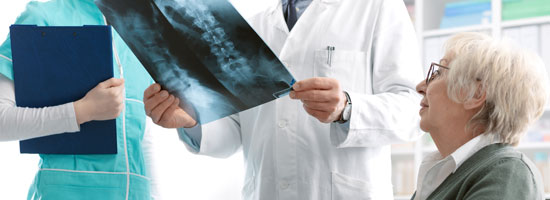
The Main Risk Factors of Osteoporosis
Osteoporosis is a condition that makes your bones brittle and weak. They can become so weak that even a simple act of coughing can cause a fracture. The most common areas of osteoporosis-related fractures include the spine, hip and wrist. Bones are made of living tissues that get constantly broken down and replaced. When the creation of new bone is not keeping up with the loss of old bone tissue, osteoporosis is the result.
The condition can affect both genders and all races. However, the highest risk groups are Asian and white women who are past menopause. There are usually no early symptoms of bone loss to watch for as a result of osteoporosis. Below are some risk factors that everyone should be aware of.
Age
One of the biggest risk factors for osteoporosis is your age. The older you get, the less dense your bones become naturally. The density of bones peaks around the age of 30. After this time, your bone mass will begin to reduce. This is why weight-bearing exercises and strength training are important. It is also crucial to get enough vitamin D and calcium in your diet to keep your bones strong as you age.
Gender
Women older than 50 are more at risk of developing osteoporosis than any other group. Women are four times more likely to develop the condition than men. Part of the reason women are more at risk is due to their thinner, lighter bones and longer life spans. While men can get osteoporosis as well, it is less common.
Family History
If you have parents or grandparents who had the illness or signs of it, you are more likely to have it as well. If they easily fractured their hip or wrists in a minor fall, this could be an indication of osteoporosis.
Body Weight and Bone Structure
Women who are thin and petite are more likely to develop osteoporosis than those who are not. Women with more body weight and larger body frames often have more bone density to lose and are less likely to develop the condition. Thin, small-boned men are at greater risk of developing the condition than men with more body weight and larger body frames.
Broken Bones
If you have had broken bones before, your bone tissue may not be strong enough to withstand trauma.
Other Risk Factors
There are other risk factors of osteoporosis such as smoking, drinking alcohol and taking some medications. If you suffer from rheumatoid arthritis, you may have a high risk of developing osteoporosis.

